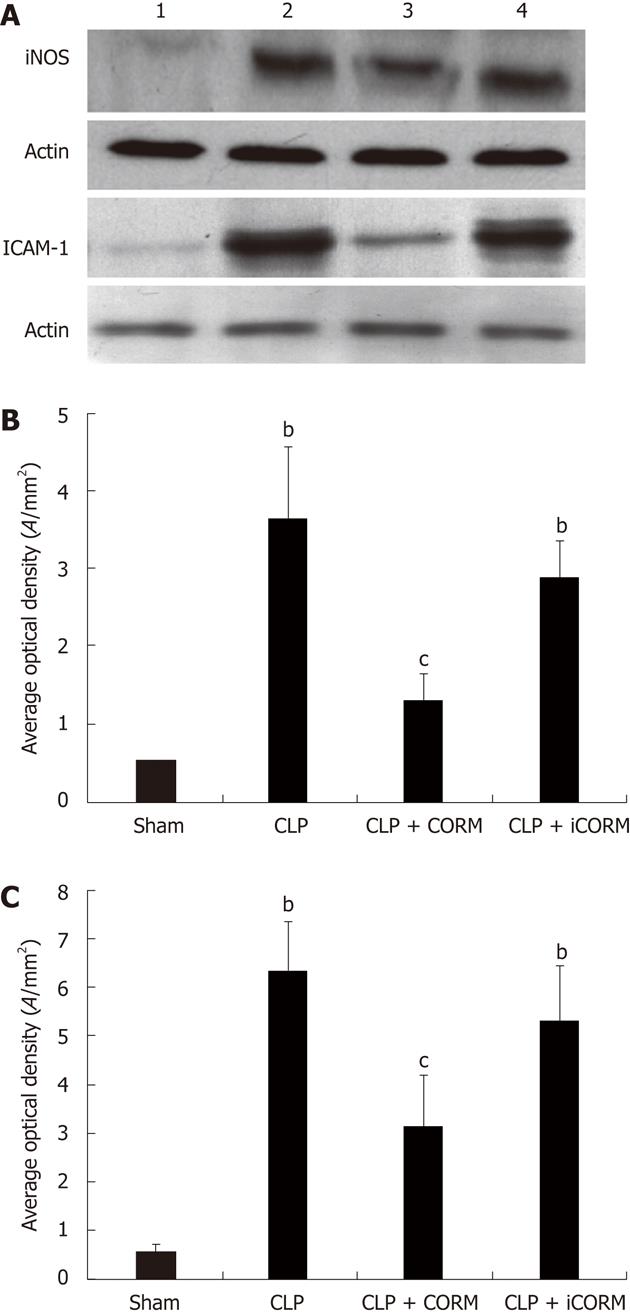Copyright
©2012 Baishideng Publishing Group Co.
World J Gastroenterol. Oct 28, 2012; 18(40): 5719-5728
Published online Oct 28, 2012. doi: 10.3748/wjg.v18.i40.5719
Published online Oct 28, 2012. doi: 10.3748/wjg.v18.i40.5719
Figure 5 Effects of tricarbonyldichlororuthenium (II) dimer carbon monoxide-releasing molecules on protein expression of intercellular adhesion molecule 1 and inducible nitric oxide synthase in the mid-ileum of cecal ligation and perforation-induced mice.
A: Representative experiment; B and C: Quantitative results (average optical density, A/mm2) of three. Mice were challenged with cecal ligation and perforation (CLP) and treated with tricarbonyldichlororuthe-nium (II) dimer. Protein expression of intercellular adhesion molecule 1 (ICAM-1) and inducible nitric oxide synthase (iNOS) in the mid-ileum was determined by Western blotting at 24 h after CLP. Lane 1: Sham group; Lane 2: CLP group; Lane 3: CLP + carbon monoxide-releasing molecule (CORM)-2 group; Lane 4: CLP + inactivated-carbon monoxide-releasing molecule (iCORM)-2 group. bP < 0.01 vs sham group; cP < 0.05 vs CLP group.
- Citation: Wang X, Cao J, Sun BW, Liu DD, Liang F, Gao L. Exogenous carbon monoxide attenuates inflammatory responses in the small intestine of septic mice. World J Gastroenterol 2012; 18(40): 5719-5728
- URL: https://www.wjgnet.com/1007-9327/full/v18/i40/5719.htm
- DOI: https://dx.doi.org/10.3748/wjg.v18.i40.5719









